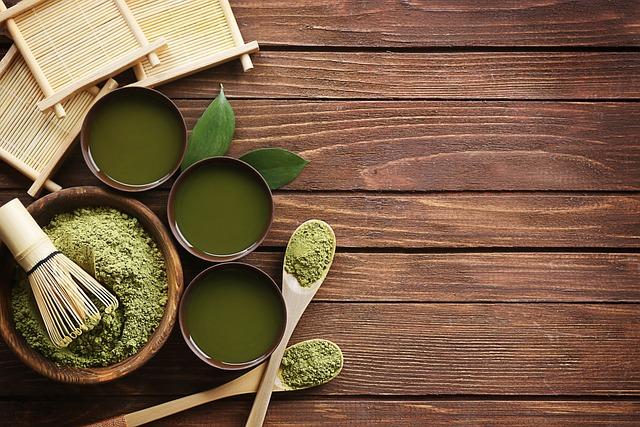Kratom Cause Nausea: Unmasking the Upset Stomach Side Effect
Are you a kratom enthusiast puzzled by the occasional bout of nausea after consuming this seemingly miraculous herb? Look no further, as we delve into the often-overlooked side effect of kratom that leaves many users feeling queasy. In this informative article, we will explore the reasons behind kratom-induced nausea, its potential causes, and helpful strategies to alleviate this discomfort. By unmasking the truth about kratom’s upset stomach side effect, we aim to provide you with a clearer understanding of this issue, allowing you to enjoy the benefits of kratom seamlessly. So sit back, relax, and let us guide you through the intricacies of kratom-induced nausea.
1. Understanding Kratom: An Introduction to Its Effects and Benefits
Kratom is a natural herb that originates from Southeast Asia and has gained increasing popularity worldwide. Its effects and benefits have attracted the attention of many individuals seeking natural alternatives for various health conditions. Let’s delve into the fascinating world of Kratom and explore its potential benefits:
1. Pain Relief: Kratom is widely known for its analgesic properties, which can help alleviate both acute and chronic pain. The herb contains alkaloids that bind to the body’s opioid receptors, thus reducing discomfort and promoting relaxation.
2. Enhanced Mood: One of the most remarkable effects of Kratom is its ability to uplift mood. By interacting with the brain’s receptors, Kratom stimulates the release of dopamine and serotonin, resulting in increased feelings of happiness and overall well-being. It can be an excellent natural remedy for those experiencing stress, anxiety, or even depression.
3. Increased Energy: Many users have reported an energizing effect after consuming Kratom. This is attributed to its impact on the adrenal glands, which leads to the release of adrenaline and other stimulating hormones. Kratom is often used by individuals looking for an energy boost or to combat fatigue and improve their productivity levels.
These are just a few examples of the potential benefits that Kratom offers. However, it’s important to note that everyone’s body chemistry is different, and effects may vary. As with any herbal supplement, it’s advisable to start with a low dosage and gradually increase until desired effects are achieved. Always consult with a healthcare professional before adding Kratom to your wellness routine.

2. The Unsettling Truth: Kratom’s Association with Nausea
Kratom, a herbal supplement derived from a tropical tree native to Southeast Asia, has gained popularity in recent years for its potential health benefits. However, it is important to acknowledge the potentially unsettling side effect of nausea that some users have reported experiencing.
While nausea is not a universal reaction to kratom usage, it has been reported by a significant number of individuals. It is crucial for users to be aware of this association and the possible causes behind it in order to make informed decisions about their usage of kratom.
Several factors may contribute to the occurrence of nausea after consuming kratom. These include the dosage, strain, and individual sensitivity. Large doses of kratom, especially for beginners, can increase the likelihood of experiencing nausea. Similarly, certain strains of kratom may have a higher propensity to induce nausea compared to others. Understanding these variables can help users adjust their dosage and strain selection to mitigate the risk of nausea.
Moreover, it is important to note that nausea associated with kratom generally subsides after a short period of time and is rarely severe. Taking breaks from kratom usage, staying adequately hydrated, and consuming kratom with food can often alleviate or minimize its onset. If persistent or severe nausea occurs, it is advisable to consult a healthcare professional.
Ultimately, acknowledging the possibility of nausea as a side effect of kratom is crucial for individuals seeking to incorporate this herbal supplement into their routine. By remaining educated and conscious of the variables that influence its occurrence, users can make informed decisions about their kratom usage and minimize any potential discomfort associated with it.

3. Delving Into the Science: How Kratom Triggers Nausea
Nausea is a common side effect experienced by some individuals who consume Kratom. Understanding the science behind this phenomenon can help shed light on how Kratom interacts with the body. Although the exact mechanisms are not fully understood, several factors contribute to the onset of nausea when using Kratom.
Gastrointestinal Irritation: One of the primary reasons Kratom can trigger nausea is its potential to irritate the gastrointestinal (GI) tract. Kratom contains alkaloids that stimulate the mu-opioid receptors in the GI system, causing an overstimulation of the digestive system. This can lead to stomach discomfort, bloating, and eventually result in nausea.
Dose-Dependent Effects: The dosage of Kratom plays a crucial role in the likelihood of experiencing nausea. While lower doses of Kratom are generally well-tolerated, consuming higher doses can overwhelm the body’s receptors and disrupt the delicate balance in the digestive system. It is essential to find the optimal dose that suits your individual tolerance to avoid triggering nausea.
Individual Sensitivity: Another factor that contributes to Kratom-induced nausea is individual sensitivity. Each person’s body chemistry is unique, and some individuals may have a higher sensitivity to the alkaloids present in Kratom. If you are particularly prone to nausea or have a sensitive stomach, it is advised to start with smaller doses and gradually increase dosage to minimize the chances of experiencing this side effect.
- Ensure you are using high-quality Kratom obtained from reputable sources to reduce the risk of contaminants that may cause nausea.
- Stay hydrated and drink plenty of water when taking Kratom to help minimize the chances of nausea.
- Consider consuming Kratom on an empty stomach or with a light meal, as a heavy meal may exacerbate nausea.
While nausea can be an unpleasant side effect associated with Kratom, by understanding the underlying science and taking proper precautions, you can minimize its occurrence and still enjoy the potential benefits of this natural herb.
4. Unmasking the Upset Stomach: Factors Influencing Kratom-Induced Nausea
Understanding the factors that contribute to the nausea experienced when consuming kratom is crucial to gaining a holistic understanding of this phenomenon. By delving into the various elements that influence kratom-induced nausea, we can shed light on ways to mitigate or avoid this discomfort altogether.
Here are the key factors to consider:
- Dosage: The dosage of kratom consumed plays a pivotal role in the likelihood of experiencing nausea. Higher doses tend to be more likely to induce this side effect, as the body may struggle to metabolize and adapt to the potency of the substance. Gradually increasing dosage and finding the optimal amount that suits you is recommended.
- Strain Selection: Different strains of kratom possess varying levels of alkaloid content, which can influence nausea. Certain strains, such as Maeng Da or Bali, are known to be more potent and may have a higher likelihood of causing stomach upset. Experimenting with different strains may help identify strains that are better tolerated.
- Personal Sensitivity: Each individual reacts differently to kratom, and some may have a higher propensity for experiencing nausea due to their unique physiology. Factors such as metabolism, existing gastrointestinal conditions, or overall sensitivity can contribute to an increased likelihood of nausea. Being mindful of your body’s response and adjusting your dosage accordingly is essential.
- Preparation Method: The way kratom is prepared and consumed can also impact the likelihood of nausea. Taking kratom on an empty stomach may increase the risk, while combining it with food can help reduce gastrointestinal discomfort. Experimenting with different preparation methods, such as teas, capsules, or toss-and-wash, may yield different results.
By considering these factors and being attentive to your body’s response, you can better navigate the realm of kratom-induced nausea. It’s important to remember that each individual’s experience is unique, and finding the ideal balance may require some trial and error.
5. Coping with Kratom Nausea: Effective Strategies and Recommendations
Nausea is a common side effect experienced by some individuals when consuming kratom. However, there are effective strategies and recommendations that can help alleviate this discomfort and allow you to continue enjoying the benefits of kratom. Here are some practical tips:
- Start with a lower dosage: If you’re prone to nausea, it’s best to begin with a smaller amount of kratom. Gradually increase your dosage until you find the right balance that works for you.
- Stay hydrated: Drinking plenty of water can help reduce kratom-related nausea. Dehydration can exacerbate this side effect, so make sure to stay properly hydrated before and after taking kratom.
- Take kratom on an empty stomach: Many users find that taking kratom on an empty stomach reduces the likelihood of nausea. Avoid consuming it immediately after a heavy meal for better results.
- Try different strains: Certain strains of kratom may be more likely to cause nausea in some individuals. Experiment with different strains and find the ones that work best for you, as effects can vary from person to person.
Remember, everyone’s body chemistry is different, and what works for one person may not work for another. These strategies provide a starting point for coping with kratom-related nausea, but it’s important to listen to your body and adjust accordingly. If nausea persists or worsens, it’s always a good idea to consult with a healthcare professional for further guidance.
6. Navigating Dosage and Strains: Minimizing Nausea Risks with Kratom
When it comes to the consumption of kratom, knowing the right dosage and strain is crucial to minimize the risk of experiencing nausea. Nausea is a common side effect that some individuals may encounter when using kratom, but with the right approach, it can be easily managed. Here are some tips to help you navigate through the dosage and strains to reduce the likelihood of experiencing this discomfort:
- Start with a low dosage: Begin your kratom journey by taking a low dosage. This allows your body to gradually adjust to its effects, reducing the chances of experiencing nausea. It is recommended to start with as little as 1 gram and gradually increase the dosage over time if needed.
- Experiment with different strains: Not all strains of kratom have the same impact on individuals. Some strains may be more likely to cause nausea than others. Explore different strains such as Bali, Maeng Da, or Borneo to determine which one works best for you, minimizing the potential for any adverse effects.
- Stay hydrated: Proper hydration is essential when consuming kratom. Dehydration can worsen nausea, so be sure to drink enough water throughout the day. This will help your body process kratom efficiently and reduce the chances of experiencing any discomfort.
- Consider taking kratom with ginger: Ginger is known for its anti-nausea properties. If you’re concerned about potential nausea, try consuming kratom with a small amount of ginger, either in tea or in capsule form. Ginger can help calm your stomach and alleviate any feelings of queasiness.
Remember, everyone’s body reacts differently to kratom, so finding the right dosage and strain may take some trial and error. By following these guidelines and being mindful of your body’s response, you can minimize the risks of experiencing nausea and enjoy the benefits that kratom has to offer.
7. The Importance of Responsible Use: Avoiding Nausea-Related Pitfalls
Nausea can be an unpleasant side effect of many activities, including certain medications, travel, or even virtual reality experiences. However, it’s crucial to understand that responsible use can help minimize these discomforts. By following a few simple guidelines, you can enjoy your activities while avoiding nausea-related pitfalls.
First and foremost, it’s essential to pace yourself. Whether you’re taking medication or diving into a virtual reality world, remember to start slowly and gradually increase your exposure. This allows your body to adjust to the new sensations gradually, reducing the likelihood of nausea.
- Maintain good posture: Keep your head upright and in line with your body. Avoid slouching or hunching over, as this can exacerbate nausea symptoms.
- Take breaks: Give yourself regular breaks during activities that may trigger nausea. Use this time to relax, breathe deeply, and let your body adjust.
- Optimize your environment: Ensure proper ventilation, adequate lighting, and minimize distracting stimuli. By creating a calm and comfortable environment, you can reduce the likelihood of nausea.
- Stay hydrated: Dehydration can worsen nausea symptoms. Remember to drink plenty of fluids before, during, and after activities to keep your body properly hydrated.
- Choose appropriate seating: If possible, select seating or positions that promote stability and minimize motion, which can help prevent nausea.
Responsible use is crucial when it comes to avoiding nausea-related pitfalls. By following these simple tips and taking care of your body, you can enjoy your experiences to the fullest without the discomfort of nausea.
8. Debunking Common Myths: Kratom, Nausea, and Long-Term Side Effects
When it comes to kratom, a natural herb originating from Southeast Asia, many myths and misconceptions often circulate. This section aims to debunk some common misconceptions surrounding kratom, specifically in relation to nausea and long-term side effects.
The Myth of Kratom-Induced Nausea
Contrary to popular belief, nausea is not an inherent side effect of consuming kratom. Nausea is often associated with consuming excessive amounts of kratom or using low-quality products. By practicing responsible usage and selecting high-quality kratom from reputable sources, individuals can greatly reduce the likelihood of experiencing nausea. It’s important to note that individuals may still have different sensitivities, so it’s always recommended to start with lower doses and gradually increase as needed.
Addressing Long-Term Side Effects
Another myth surrounding kratom is the notion of significant long-term side effects. Extensive research into the effects of kratom consumption has not uncovered any substantial evidence of long-term harm when used responsibly. However, it’s crucial to adhere to recommended dosage guidelines and avoid excessive consumption. As with any substance, moderation and individual awareness are key in minimizing potential risks.
Getting the Facts Straight
Dispelling myths surrounding kratom is crucial for individuals seeking accurate information. By understanding that nausea is often related to improper usage or poor product quality, users can make informed decisions. Likewise, acknowledging that responsible kratom use does not pose significant long-term side effects empowers individuals to utilize this herb safely. Remember, always consult with a healthcare professional before incorporating kratom into your routine to ensure it aligns with your overall well-being.
9. Seeking Medical Advice: When to Consult a Healthcare Professional for Kratom-Related Nausea
Experiencing nausea while consuming kratom can be a common occurrence for some individuals. While it may not always be a cause for concern, it is important to know when it’s time to seek medical advice. In general, if you are experiencing persistent or severe kratom-related nausea, consulting a healthcare professional is recommended.
Here are a few signs that indicate it’s time to schedule an appointment with a healthcare professional:
- Repeated episodes of nausea after kratom consumption
- Severe nausea accompanied by vomiting or diarrhea
- Nausea that lasts for an extended period of time, beyond what is considered normal
When you consult a healthcare professional, they can help determine the underlying cause of the nausea and provide appropriate guidance. They may ask questions about your kratom consumption, overall health, and any other medications or substances you are taking. They may also request certain tests or examinations to rule out any potential underlying conditions. Remember, seeking medical advice is crucial to ensure your well-being and address any potential health concerns.
Conclusion
In conclusion, while kratom may offer various benefits, it is crucial to address the potential side effect of nausea. As we have uncovered, the upset stomach caused by kratom can be attributed to its alkaloid content and individual factors such as dosage, tolerance, and personal sensitivity. By understanding these underlying causes and implementing certain precautions, users can significantly minimize the likelihood of experiencing this uncomfortable side effect.
To mitigate nausea, it is recommended to start with low kratom doses and gradually increase as your body adjusts. Additionally, taking kratom on an empty stomach can enhance its effects, but may also increase the risk of nausea. Hence, consuming a small meal or snack prior to ingestion can help alleviate this issue.
Proper hydration plays a critical role as well. Drinking plenty of water before, during, and after kratom consumption can assist in preventing dehydration, which may contribute to a queasy stomach. Furthermore, combining kratom with antiemetic substances, such as ginger or peppermint, has shown positive results in alleviating nausea for some users.
It is vital that individuals consult with a healthcare professional before incorporating kratom into their routine, especially if they have a medical condition, take prescription medications, or are pregnant or breastfeeding. By having a thorough understanding of their own health profile and the potential interactions kratom may have, users can make informed decisions and reduce the chances of experiencing any adverse effects.
Remember, while kratom-induced nausea is less common than the plant’s other beneficial effects, it is essential to approach its usage responsibly. By arming yourself with knowledge and taking certain precautions, you can navigate the potential upset stomach side effect with confidence and enjoy the benefits that kratom can offer.






